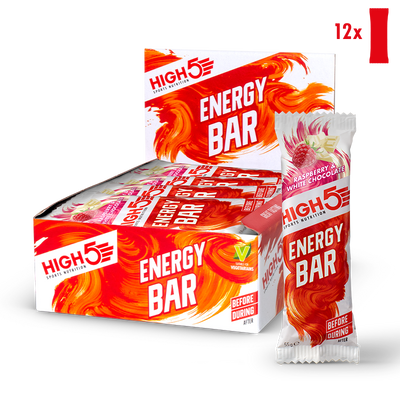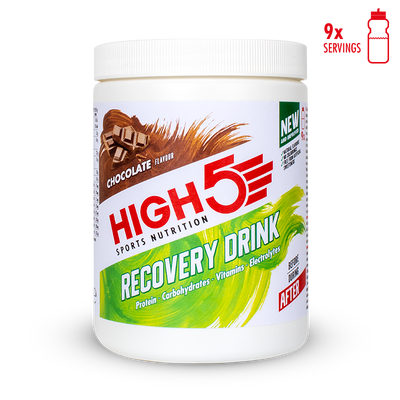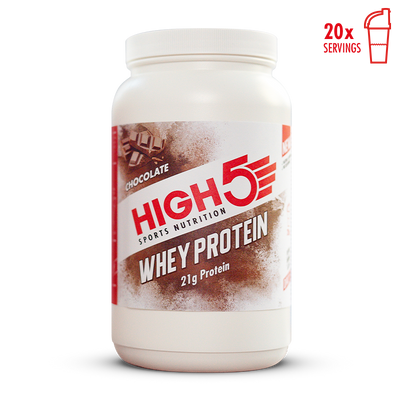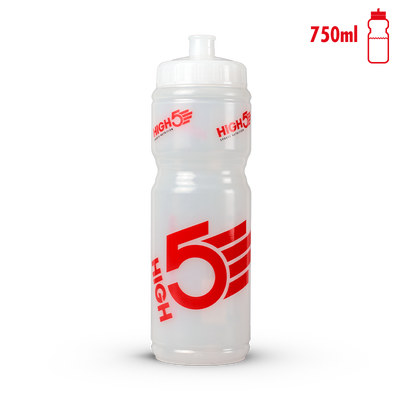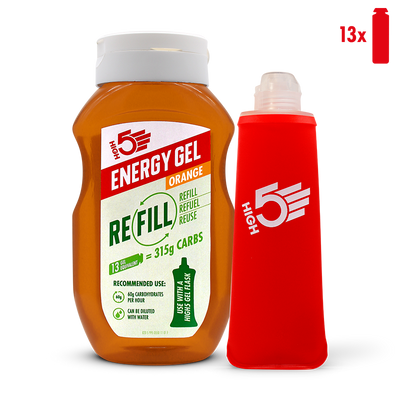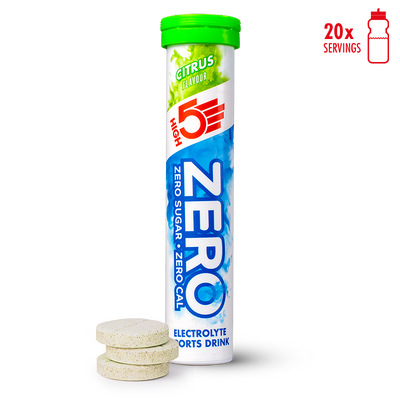Nutrition is the fourth leg of a triathlon but do you know what to eat and drink during an Olympic Distance Triathlon? Getting your nutrition right can make all the difference to getting across the finish line and having an enjoyable race so here’s a guide to help you plan your nutrition strategy for the race.
Fuelling a Triathlon
Carbohydrate is your high-energy fuel for endurance events. It will help you go faster and further. Unfortunately, you only have a limited amount stored in your body and it’s depleted after less than two hours of swimming, cycling or running. Carbohydrate re-fuelling will substantially extend your endurance by providing the extra energy you need. You’ll enjoy your event more and feel stronger, particularly later on. You can consume energy bars, gels and drinks for carbohydrate.
HIGH5 Energy Drink is an advanced sports drink that contains a revolutionary carbohydrate formulation known as 2:1 fructose. Find out more about 2:1 fructose drinks and how you can benefit here.
Staying Hydrated
You lose fluids and electrolytes when you sweat. If you don’t replace these, then you become dehydrated which can negatively affect your performance. Sport drinks like HIGH5 ZERO and Energy Drink contain electrolytes to enhance the absorption of water and help you to re-hydrate.
Good to know
The following guidelines are based on the latest science and real world feedback from thousands of athletes to help you perform better and enjoy your race more. Research shows that by simply following these guidelines on the day of an event, athletes were able to race 9% faster. This was compared to their existing brand of nutrition consumed as normal. Find out more here.
Breakfast
An ideal pre-race breakfast is light and high in carbohydrates with a little bit of protein too. Porridge, toast and rice pudding are good options for carbohydrate. A poached egg or omelette would be a good source of protein.
Caffeine before the swim
Caffeine gives you both a physical and mental boost. When taking part in tough sport events like an Olympic distance triathlon, it helps to increase your endurance performance. This means you can go faster than before without any extra training!
The scientific research has shown an effective dose is 3mg caffeine per kg bodyweight for increased endurance performance. Below you can see how much caffeine(1) you need to take depending on your body weight and an example of what you could take to get there.
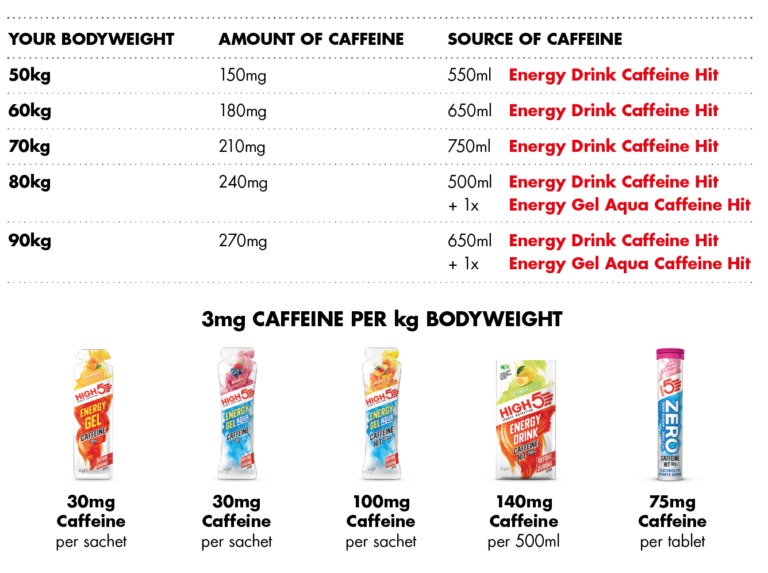
In an Olympic distance triathlon take caffeine at the start before the swim so that you can benefit from it for the whole race. Take this around 60 minutes before the swim start.
During the ride
An Olympic distance triathlon is often won or lost in terms of nutrition during the ride. Start to drink and eat as soon as you have settled down into your rhythm after transition to keep your stores topped up. You might not feel it straight away but it will make a difference later on. How much you can drink on the bike often depends on the weather conditions. In warm or hot conditions, the scientific 2:1 fructose and electrolyte formulation in HIGH5 Energy Drink means that you can drink up to one litre per hour. This will provide fluids, electrolytes and carbohydrate for hydration and energy. Some triathletes also prefer to use an electrolyte only drink like HIGH5 ZERO. This is a hydration only drink that will not provide you with carbohydrates for energy. It’s important to focus on drinking to remain hydrated.
Depending on what drink you use and how much you drink, you also need to take on carbohydrates from bars and gels. You should be aiming for 60-90g of carbohydrate per hour. If you are drinking ZERO then one Energy Bar and a gel per hour will provide you with just over 60g of carbohydrate. If you are drinking Energy Drink, you can take the following number of gels or bars shown per hour to provide you with 80-90g of carbohydrate per hour:

For gel intake you can use either HIGH5 Energy Gel or Energy Gel Aqua depending on personal preference.
Your body removes caffeine from your bloodstream over time. Once you have loaded up with caffeine, you should top up with 30mg every hour. Energy Gel Caffeine and Energy Gel Aqua Caffeine each contain exactly 30mg caffeine per sachet.
During the run
When running, it’s easiest to get your carbohydrate energy from gel. You can take up to three sachets of Energy Gel or Energy Gel Aqua per hour. This will give you around 60g of carbohydrate per hour. If you have been using caffeine, then one gel should be the Caffeine variant to keep you in the caffeine performance zone. Any remaining gel should be standard gel with no caffeine.
Sensitive to caffeine?
If you have a medical condition or do not wish to use caffeine for another reason, then simply switch each of the products detailed above with the non-caffeine equivalent from HIGH5 and ignore the section on caffeine loading before your event.
Anti-cramp strategy
The American College of Sports Nutrition states that:
“Muscle cramps are associated with dehydration and electrolyte deficits and muscle fatigue.”
Adding ZERO Neutral Tabs to your drink boosts the electrolyte content and provides magnesium. This might be particularly useful in hot conditions.
When you finish
When we exercise our muscles become energy depleted and break down. In a tough triathlon, you really push your body to the limit so expect soreness and stiffness afterwards. Consuming protein and carbohydrate as soon as you can afterwards to help replenish your muscle energy stores and kick start the recovery process.
Drink 400ml Recovery Drink as soon as you finish. This contains a unique blend of whey protein isolate and carbohydrates. It gives you the time to have a shower and relax a bit before eating a balanced meal one to two hours later.
Notes
- These guidelines should provide your body with the maximum amount of carbohydrate it can absorb and you should not need additional solid food.
- Some athletes that suffer from cramps, may also find that caffeine can make them worse, so you may wish to substitute the caffeine products listed with their non-caffeine equivalents.
- Use a Race Belt to carry your gels when running.
Good Luck!
(1) We do not recommend caffeine for children and pregnant or breast feeding women.



